Bird Surveys
Sea and Sage Audubon Society sponsors a number of bird surveys throughout the year. Other organizations also sponsor bird surveys in which Sea and Sage members participate. These surveys occur annually, monthly or on other regular schedules.
Annual Surveys
Other Surveys
Christmas Bird Count
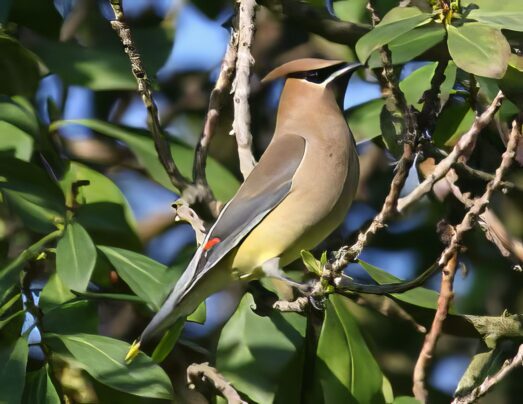
Cedar Waxwing photo by Dr. Bruce Odou
The Christmas Bird Counts are always held between Dec. 14th & Jan. 5th. This annual bird count encompasses the United States and Canada, as well as Central and South America, the Pacific Islands, West Indies, and Bermuda. The data collected helps scientists learn more about the status and distribution of our birds. Here in Orange County, we have four different Christmas Bird Counts.
This year the counts will be held on the following dates:
- North East (Inland) CBC – Dec. 15, 2024
- San Juan Capistrano (South County) CBC – Dec. 21, 2024
- Puente Chino-Hills CBC – Dec. 28, 2024
- Coastal CBC – Jan. 4, 2025
All four of the Christmas Bird Counts are sponsored by Sea & Sage Audubon. Everyone is welcome to participate, from beginners to old hands. Those of you who are less experienced can help by tallying the birds. Most sections begin in the early morning and end as the sun sets. After each count, participants gather together for supper and do a general tally of the count.
You can learn a lot about past CBCs by reading through this page and those linked to it. We have complete reports on 5 years of counts on this website. You can find information on the CBCs nationwide as well as those in other areas of California. We have a CBC quiz, written by Sylvia Gallagher, which will help prepare you for the event and we even have a CBC poem for you to enjoy!
If you have not taken part in one of our local CBCs before and wish to do so, please print out a copy of the sign-up form for the count you wish to participate in (see below), and mail it to the address shown on the form. Those people who took part in one of our local CBCs last year, will be contacted by their area leader in late November or early December.
Summaries of each count showing the total for each species is published in the Sea & Sage newsletter, the “Wandering Tattler.” A detailed report on all the species for each section of each count is posted here on this website after the data has been compiled, along with the names of all the count participants. Count totals are also available on the NAS Christmas Count website.
A separate page has been devoted to each of the three Christmas Bird Counts here in Orange County. Each page contains a list of areas to be covered and their count leaders, 7 years of CBC reports showing data for each section, a sign-up form for new participants, and the CBC forms to be used by the participating birders.
| Information on the CBC’s nationwide: | |
| Map of CBC counts in North America | |
Orange County Spring Count
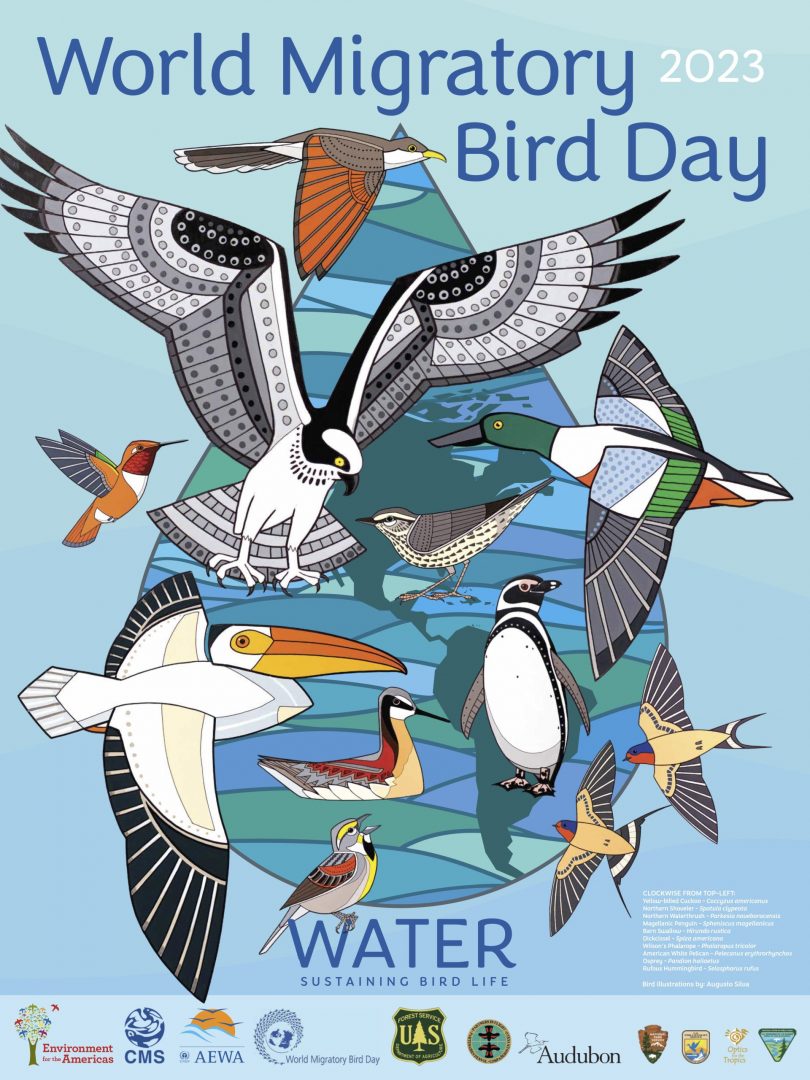
What is the OCSC?
The OCSC (Orange County Spring Count) is part of a nationwide migration count, similar to a Christmas Bird Count, but timed to the opposite half of the migration cycle. This year the OCSC is being expanded to try to capture more of the birds that migrate through the county. Sea and Sage is encouraging birders to participate anytime during the months of April and May. This will allow us to see and count more of the species that migrate through the county. Again, this year we will try to focus on the best areas for birds since comprehensive coverage of the entire county is not a realistic goal.
How Can I Participate?
One of the objectives of Environment for the Americas (the sponsor of the hemisphere wide count) is to enter all of the data into eBird. This means that it is very simple to participate. All of the regularly scheduled bird counts in April and May will be included in the OCSC. The dates do not need to change. I will also include the checklists from all of the Sea and Sage field trips in Orange County held during April and May.
Many of you already use eBird. You can enter your Spring Count data directly into eBird for any birding that you do during April and May. You don’t have to send tally sheets to anyone. All that is needed is to share the eBird check list with the Sea and Sage Audubon eBird account. (The eBird user name is sea_sage_aud).
If you don’t currently use eBird, you can sign up. It’s free! www.ebird.org
A goal for the OCSC is to count all the Top 100 Hot Spots shown in eBird. It does not matter how many times a particular spot is covered. Users of the eBird data can sort that out.
San Joaquin Wildlife Sanctuary

For over 20 years, we have been conducting a monthly bird census of all the ponds in the San Joaquin Wildlife Sanctuary as well as the San Diego Creek, land areas surrounding Audubon House and the Duck Club buildings, tree hill, the riparian area, and other areas within the San Joaquin Wildlife Sanctuary. The census is conducted by a group of birders from Sea and Sage Audubon Society. The data we have collected is used for updating the SJWS bird list as well as for analyzing the status of migratory birds around the sanctuary. All of our census data has been posted on eBird.
UCI Freshwater Marsh
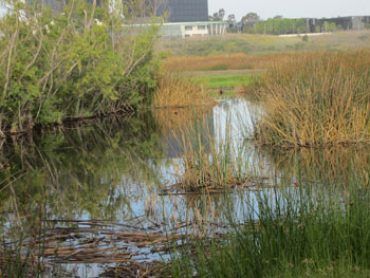
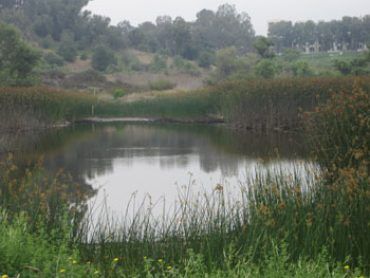
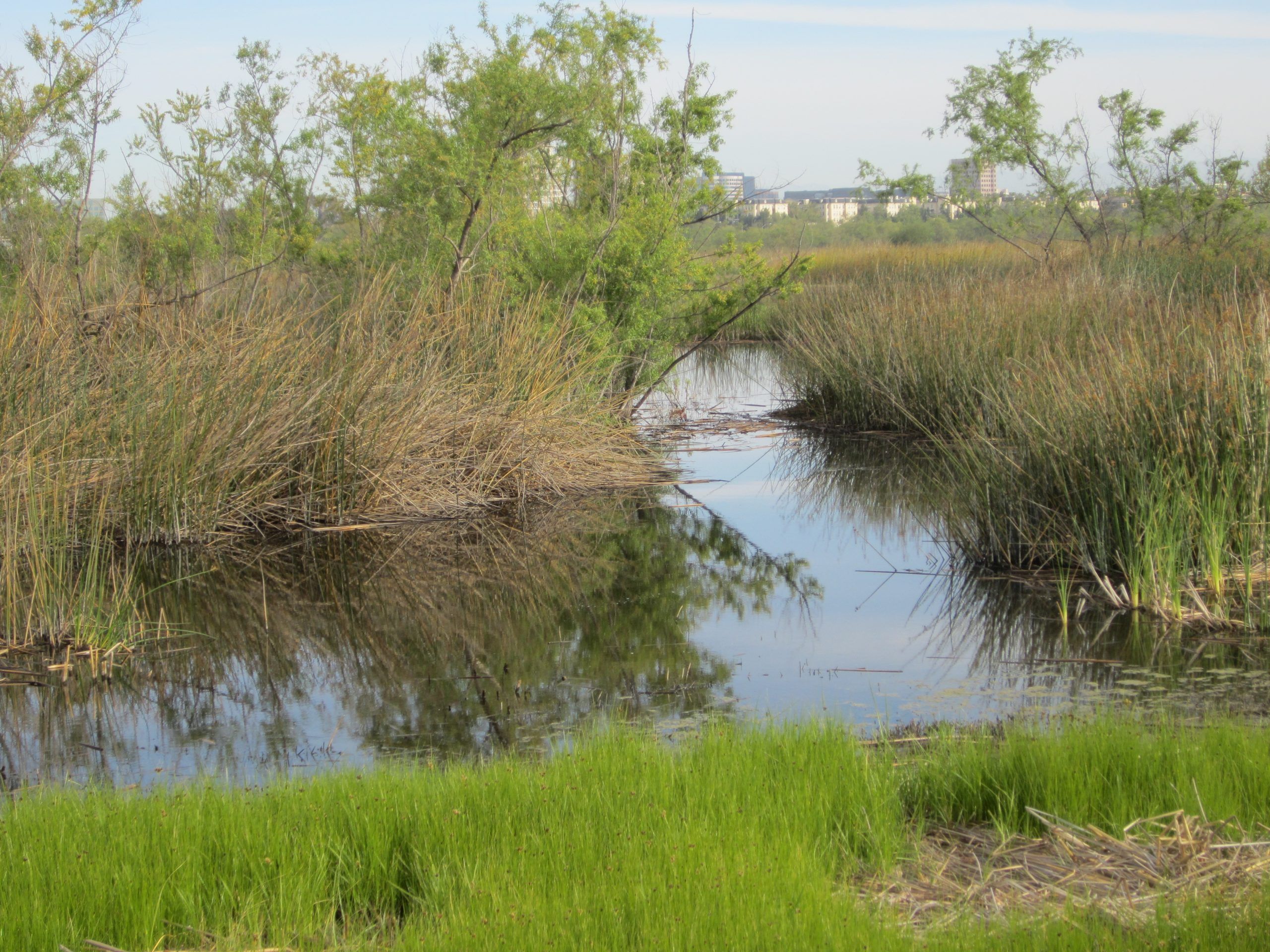
This census is conducted by birders from Sea & Sage Audubon on the 1st Wed. morning of each month from 7:15 – 10:00 AM.
We divided the preserve into four areas so that we could cover the area more completely:
AREA ONE: Sediment Pond; Ponds 1,2,3; land area between the parking lot and
Campus and between road & eastern preserve boundary
AREA TWO: Ponds 4, 5, 6, 7, 8, 9, 10, 11
AREA THREE: The Bluff Area and access road
AREA FOUR: The Arboretum, Upper Marsh, and access road
University Hills EcoPreserve
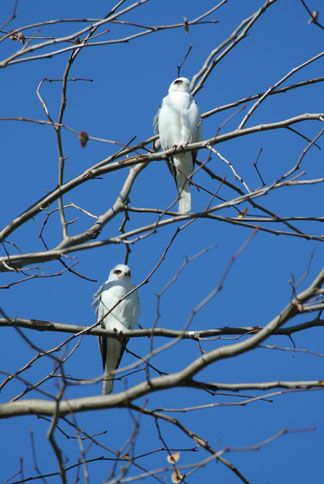
University Hills Ecological Preserve is located in the University Hills Community. The preserve is a mosaic of two ecosystems of California Coastal Sage Scrub and grassland. These 60 acres provide critical nesting habitat for threatened birds like the California Gnatcatcher and the Coastal Cactus Wren.
This census is sponsored by UCI Nature. It is conducted monthly on the third Thursday of the month.
BirdSeasons
~ at the San Joaquin Wildlife Sanctuary ~
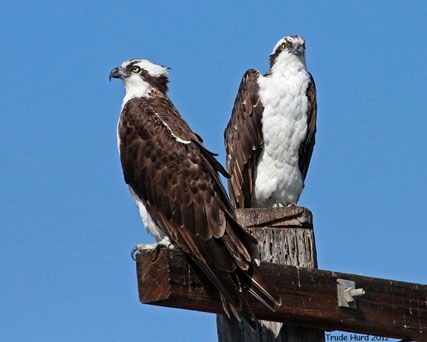
Sea and Sage Audubon is participating in California Audubon’s, BirdSeasons CA as part of its contributions to the National Phenology Network (NPN). Phenology is the study of seasonal change of plant and animal life at the population level in relation to timing changes in relation to biotic and abiotic forces. This nation-wide network is comprised of various projects across the country and all data captured is entered into the Nature’s Notebook database. NPN’s database houses phenology data used by scientists to manage invasive species, understand the timing of carbon cycling, and assess the vulnerability of species, populations, and ecological communities to ongoing climate change.
Sea and Sage’s project consists of a survey thru the San Joaquin Wildlife Sanctuary to document observations of eight species of birds. Each survey is timed and follows the same route so that observers can record comparable data. Teams are making behavioral observations such as feeding, courtship and territorial individuals, to name a few. Documenting these behaviors can help scientists determine whether the timing of these actions is changing over a period of time.
Over the past six years, we have had two teams per week in the field making these observations. After-which, they input their data helping researchers better understand the important phenological changes of these eight species in our area.
If you are interested in this behavioral study and are proficient at identifying the birds in Orange County, please contact Bettina Eastman (bettinae24@gmail.com). She can explain the protocol and training necessary to participate in this Community based science project.
Upper Newport Bay
Monthly census reports
Starting in 2000, Sea and Sage Audubon Society has been conducting a monthly bird census in Upper Newport Bay from the deck of a small pontoon boat on the 3rd Wednesday morning or each month from 8:30 to 11:00 a.m. The census is done by birders from Sea and Sage, coordinated by Nancy Kenyon. Until the fall of 2010, our course was from the Back Bay Science Center boat dock, up the bay to the boat limit sign above the old salt dike, and then back again. The data we have collected is used for analyzing the status of resident and migratory birds in the upper portion of the bay.
In the fall of 2010, we switched our boat and starting location from the Back Bay Science Center to the Newport Sea Base because the dock at the Back Bay Science Center needed repair. Fortunately for us, the pontoon boats belonging to the Sea Base are much more suitable for our needs because they can hold more people and have a steadier deck from which to bird. All of our census data has been posted here on the website. Click on the census year you are interested in seeing.
In March 2020, the monthly bird counts were suspended due to the COVID pandemic. Hopefully they will be restarted when conditions improve.
Tree Swallow Nest Box
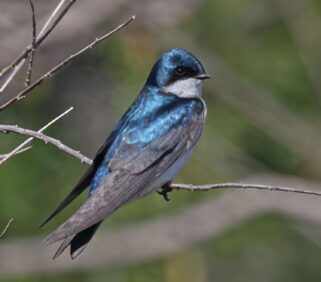
photo by Trude Hurd
Nestbox Program at the San Joaquin Wildlife Sanctuary in Irvine
Christine Tischer
SJWS Nestbox Program Manager
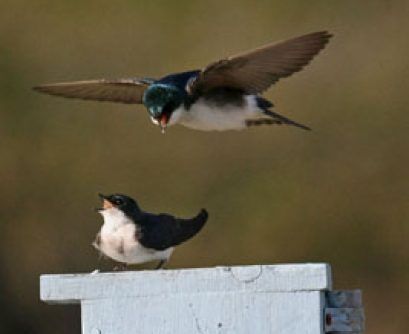
History
The Tree Swallow is a neotropical migrant passerine species whose breeding range includes the majority of North America. This small 5” bird is a lowland cavity nester that typically nests in tree cavities in open areas in close proximity to water. It migrates 100s of miles to overwinter in the southern United States, Mexico, and Central America and returns to the breeding grounds in early February. Southern California is at the southernmost known range of the Tree Swallows’ breeding grounds. Successful breeding was not confirmed during Orange County atlasing years in 1985-1990 and only three pairs of nesting Tree Swallows were confirmed in Orange County post atlasing 1991-1994 (Gallagher 1997). Tree Swallows typically nest in tree cavities as indicated by their name. However, this species and other cavity nesting species were on the decline as breeding birds in Orange County because of the loss of old growth tree groves to residential and commercial development and competition with non-native cavity nesting species like the European House Sparrow and starling. Luckily, Tree Swallows readily adapt to artificial nestboxes and the entrance hole can be made smaller to eliminate use by starlings. In the late 1990’s, Sea and Sage Audubon helped Irvine Ranch Water District (IRWD) install a handful of nestboxes at the San Joaquin Marsh as part of mitigation measures for IRWD’s use of the San Joaquin Marsh as a water filtration and purification facility. These boxes were not monitored to determine if they were successful or not. However, Jan Wasserman, manager/founder of the Tree Swallow Nestbox Project in Ventura County, managed to make a single trip to the San Joaquin Marsh in 1999 to educate Sea and Sage on the care and maintenance of artificial nestboxes. She banded 19 Tree Swallow nestlings and 3 Tree Swallow adults in 5 different boxes. Beginning in 2000, Sea and Sage Audubon recruited several volunteers to monitor and maintain the boxes. Hardly any vegetation was associated with the ponds at the start of the program in 2000. Since that time, restoration activities have greatly improved the landscape at the marsh while providing more foraging, overwintering, and nesting habitat for numerous bird species. Nestboxes are shifted on a yearly basis to account for vegetative growth and to optimize productivity. The program has been highly successful in bringing the Tree Swallow back to the County of Orange as a breeding bird species.
Monitoring
Volunteers monitor the boxes on a weekly basis during the breeding season (March through July). Weekly monitoring is very basic and encourages novice birders, recreational birders, expert birders, retirees, students, and minors (with help from their parents) alike to come to the San Joaquin Wildlife Sanctuary and experience nature as well as take pride in helping with a “citizen scientist” research project. Weekly monitoring consists of visiting each box, opening the box to determine if a nest is present, recording the number of eggs, number of chicks, approximate age of chicks, and eventually, determine how many chicks successfully fledge prior to cleaning out the used nest so that the box will be ready for the next nesting. Adults that are inadvertently captured during weekly nestbox monitoring checks are checked by the volunteers for bands and the band number is recorded. Checks on a weekly basis are necessary to prevent occupation of boxes by non-native cavity nesting bird species, reduce parasitism events (ants and mites), and make sure boxes are in working condition throughout the breeding season.

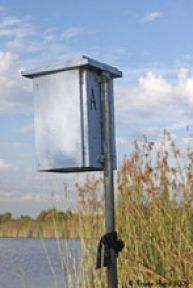
photos by Trude Hurd
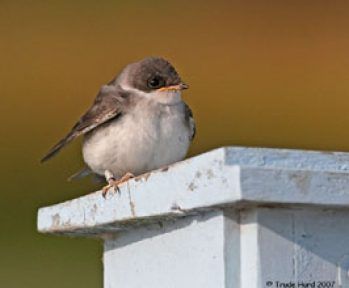
Banding Program
Chicks are banded at 10 to 12 days of age and typically fledge between 21 to 24 days of age. A small aluminum band is placed around one leg of each bird by a certified bander. Each band is engraved with a unique series of numbers, typically 4 numbers in the top row and 5 numbers in the bottom row. The band numbers, age of bird when banded, and banding location are reported to the U.S. Geological Survey (USGS), who then inputs the information into a nationwide database for banded birds. Valuable information can be collected when birds are found or recaptured later in life. If you ever find a banded bird, record the band sequence from top to bottom and from left to right. Note the leg the band is on, and whether it’s the bird’s left or right leg. Some birds can be color banded with one color band, multiple color bands, or a combination of color and metal bands. Again, note the leg it occurs on and the sequence of the color bands from closest to the body to furthest from the body (for example, blue over red or metal over yellow). Don’t forget to note the type of bird if you are able to identify it or at least a description of the bird and its size. This information can be called into the USGS Bird Banding Hotline at 1-800-327-BAND. You will receive an official certificate in the mail describing where and when the bird was banded and you’ll be providing invaluable data for that bird species.
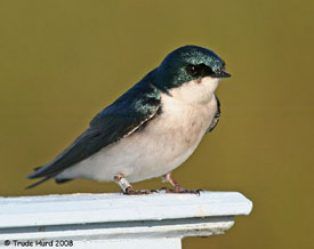
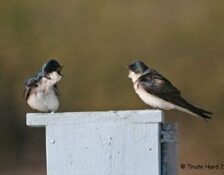
photos by Trude Hurd

Golondrinas de las Americas
The Golondrinas de las Americas is an international community of biologists studying swallows in the genus Tachycineta from northern Canada to Argentina. The program is based out of Cornell University in Ithaca, NY, and uses standardized protocols to better understand the breeding biology of swallows and their aerial insect prey. The network of biologists monitor the effects of weather and insect density on avian breeding at different latitudes across the Western Hemisphere and are pursuing studies of geographic variation in many aspects of swallow biology. In 2013, the San Joaquin Wildlife Sanctuary increased the number of nestboxes at the marsh to 100 and adopted the standardized monitoring protocol utilized by the Golondrinas network in an effort to contribute to the geographic study of the Tree Swallow.
2000-2014 Nestbox Results
Although the nestboxes are appropriately sized for a number of cavity-nesting bird species, the boxes are used almost exclusively by Tree Swallows (Tachycinita bicolor). During the fifteen years of monitoring activities, the nestbox project has resulted in 7,713 eggs laid, 5,623 eggs hatched, and 4,280 chicks successfully fledging. The program loses eggs and chicks and the occasional adult to ants, mites, rats, and unknown causes on a consistent basis. Death rate for chicks is typically between 15% and 25% but has been as low as 10% and as high as 56%. A total of 4,375 chicks and 102 adults have been banded at the Wildlife Sanctuary. A few Western Bluebirds (Sialia mexicana) and House Wrens (Troglodytes aedon) have claimed a box or two over the years, but their numbers are not included in this summary. The results of the nestbox program from years 2000 to 2014 are summarized below.
Nestbox Availability and Utilization
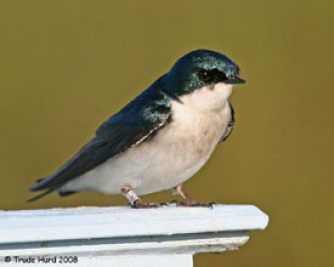
The program has increased from 56 boxes in 2000 to a high of 113 boxes in 2004 and presently supports 100 boxes. The graph below shows the number of nestboxes available each year (dark blue line) compared to the number of nestboxes utilized during each nesting attempt. A box was considered utilized if at least one egg was laid in the nest. The graph below shows the number of nestboxes utilized by tree swallows. Three other cavity nesting bird species, western bluebird (Sialia mexicana), house wren (Troglodytes aedon), and Bewick’s wren (Thryomanes bewickii), have occupied a nestbox or two over the years, but their results are not included in this summary.
Tree Swallow Egg Production
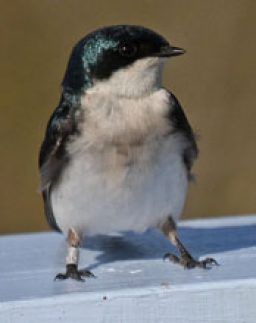
A total of 264 eggs were laid during the first year of monitoring in 2000. The number of eggs increased rapidly to 446 in 2001 and peaked in 2008 at 622. Egg production numbers have fluctuated throughout the years with 2011 having the least number of eggs produced (398 total eggs). Nine attempts at a third nest attempt have been documented. All but 1 had at least one failed or predated nest during the first or second nest attempts. Box C16 in 2012 may have been the first official triple clutch having the second earliest lay date of the season (March 12) and the latest lay date of the season (June 24). Because it is difficult to track individuals, it is only an assumption that it is the same pair attempting to nest for a third time.
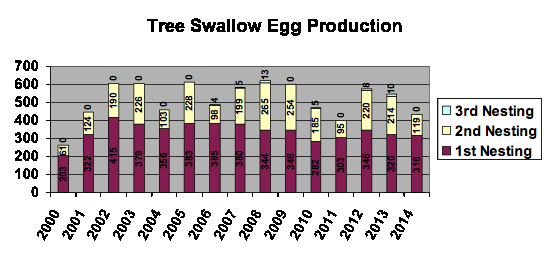
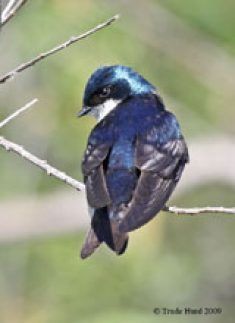
Tree Swallows Hatched
The greatest number of chicks hatched in one season occurred in 2005 with a total of 485 of 611 eggs hatching (79% hatch rate). The least number of chicks hatched in one season occurred in 2000 with a total of 221 of 264 eggs hatching (84% hatch rate). However, 2000 was the start of the program and the year with the fewest number of nestboxes available. The 84% hatch rate in 2000 was the highest hatch rate for all 11 years of monitoring. 2007 had the lowest hatch rate with just 61% of eggs laid resulting in a live chick.
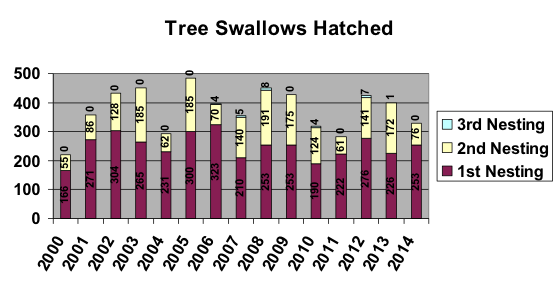
Tree Swallows Fledged
The greatest number of chicks fledged in one season occurred in 2005 with a total of 402 (of 485 hatched) successfully leaving the nest (83% fledge rate). The least number of chicks fledged in one season occurred in 2007 with a total of just 156 tree swallows (of 355 hatched) successfully leaving the nest (44% fledge rate). This was even lower than the number of tree swallows successfully fledged at the start of the program when only 56 nestboxes were available! This was not an isolated event as the Tree Swallow Nesting Project in Ventura County, California experienced a similar phenomenon. A detailed study has not been conducted, but it is likely due to a combination of factors including climate, food availability, parasitism, and water availability.
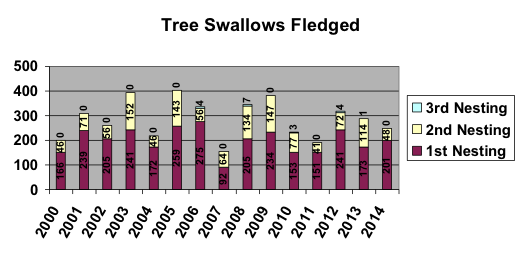
Tree Swallow Recaptures
Several tree swallows have been recaptured, providing good data and insight into this small passerine species. Many of the recaptures are first time nesters, having been banded at the marsh as a nestling during the previous nesting season. The oldest bird that has been recaptured was 9 years old and she was still incubating eggs! So we know that tree swallows are reproductively mature at 1 year of age and can nest as old as 9 years of age. Some display nestbox affinity, as they are recaptured in the same box either during the same season during different nesting periods and/or recaptured in the same box during different years. Some of the birds that have been recaptured multiple times have been captured in a different box each time. Still other birds banded as nestlings at the San Joaquin Marsh have been found nesting in locations away from the marsh. Locations where our birds have been found nesting (by other nestbox monitors) include San Carlo Park (~1.5 miles northeast in Irvine), Peter’s Canyon Regional Park (~9.3 miles north in Orange), Yorba Regional Park (~14 miles north in Anaheim), Prado Flood Control Basin (~22 miles northeast in Riverside County), and Saticoy Ponds (~85 miles northwest in Ventura County). A detailed account of a few of our marsh’s residents is presented below. Despite the fact that the majority of nestlings at the marsh are banded at 10-12 days of age, a number of unbanded adult tree swallows nest at the marsh each spring.
Betty (Band #900-05154):
Originally banded as a nestling at the Saticoy Ponds in Ventura County on May 15, 1995. Recaptured in Box A50 on June 14, 2000, on June 1, 2002, on June 6, 2003, and April 11, 2004. An unbanded adult was captured in Box A50 in 2005 and Bird 900-05154 has not been recaptured since, so it is assumed that she did not make it to 10 years.
Nelly (Band #1601-34579):
Originally banded as a nestling in Box C11 on May 27, 2006. Has been recaptured nine times between 2007 and 2010. This female was recaptured three times in Box A48 in 2007 during two different nesting periods. It was then recaptured twice in 2008, in Box A37 during the first nesting period (successfully fledged 4 chicks) and in Box A36 (just 20 feet away) where she successfully fledged another 4 chicks during the second nesting period. She was recaptured two more times in 2009, both in Box A48 again, once during the first nesting period and once during the second nesting period. Again recaptured in Box A48 in 2010, on chicks during first nesting and on 4 eggs during second nesting. An unbanded female was captured in Box A48 in 2013 so it is likely that Nelly is no longer around.
Nadine (Band #1601-34580):
Sibling of Nelly (#1601-34579) also banded as a nestling in Box C11 on May 27, 2006. Recaptured in Box A07 while incubating 5 eggs on April 27, 2007. Box was predated by rat. Recaptured the following year in Box A16 (~580’ away) on June 8, 2008 while incubating 6 eggs. Only fledged 1 of 5 chicks that hatched.
Justine (Band #1771-03223):
Originally banded as a nestling in Box B06 on June 3, 2001. Recaptured in Box A01 on 5 hatchlings on May 18, 2002. Successfully fledged all 5. Recaptured in Box B23 (~840’ away) on June 6, 2003 on 6 eggs. Successfully fledged 5 of 6 chicks. Again recaptured in Box B23 on May 1, 2004 on 6 eggs. Successfully fledged all 4 chicks that hatched. Recaptured in Box B23 on July 3, 2004 on 4 hatchlings. Successfully fledged all 4 chicks. Recaptured in Box B23 on May 15, 2005 on 5 older chicks of first clutch…all of which successfully fledged 5 days later.
Paula (Band #2000-86663/Blue Band on Right Leg):
Originally banded as a nestling in Box 22 in Saticoy on May 18, 2001. Recaptured exactly 1 year later in Box B28 at the San Joaquin Marsh. Recaptured two years later on May 24, 2002 in Box B26 on 4 hatchlings. In 2005, she was recaptured twice during first nesting in Box A01, and once during second nesting also in Box A01. Recaptured one final time in an empty nest in Box A05 on June 2, 2007.
Lola (Band #1771-04032):
Originally banded as a nestling in Box B15 on June 29, 2002. Recaptured 3 times in 2005 in Box B36, twice during first nesting and once during second nesting. Recaptured again in Box B36 in 2006 during the second nesting. In 2008 she was recaptured in Box B34 on April 18th. On June 13, 2009 she was recaptured in Box B33. She was last recaptured in Box B15 on June 24, 2010 at the ripe old age of 8 years old.
If you are interested in helping out with the nestbox program, please contact Christine Tischer at clmukai13@gmail.com
